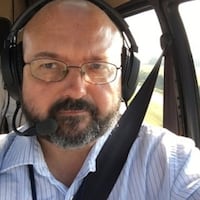About the Dayton Peace Accords
On Nov. 1, 1995, the day the talks began, the Dayton Daily News summed up the situation: “The Bosnian peace talks begin today at Wright-Patterson Air Force Base with cautious optimism. Still the pain of economic sanctions and air strikes make them possible.”
Key players in talks included Bosnian President Alija Izetbegovic, Serbian President Slobodan Milohostsevic and Croatian President Franjo Tudjman.
Warren Christopher, the U.S. Secretary of State, and Richard C. Holbrooke, the assistant secretary of state, facilitated the talks and worked toward a sustainable peace.
As the site of the talks, Wright-Patterson Air Force Base ensured security. The talks remained securely behind closed doors after an opening session to which local and international media were invited.
Mary McCarty, a longtime reporter for the Dayton Daily News, was among the more than 300 journalists from around the world who reported on the talks.
Credit: HANDOUT
Credit: HANDOUT
“One of the most memorable and shocking things I remember is reporters would be behind the gates at the Hope Hotel and we could see Serbian President Slobodan Milosevic come out for his morning stroll around the perimeter,” McCarty later said. “I was thinking here it is a beautiful fall day in Dayton, Ohio, and this murderous dictator is taking a walk 100 yards away from me. It was a very strange feeling.”
By the time of the talks, that war had lasted for almost four years. It had taken some 250,000 lives and created two million refugees — Europe’s bloodiest conflict since World War II.
The agreement hammered out after 21 days of negotiations at the Hope Hotel at WPAFB — formally signed a month later in Paris — stopped the war between Bosnian, Croat and Serb forces, and provided a constitution for Bosnia and Herzegovina.
Credit: Skip Peterson
Credit: Skip Peterson
Jamie Shea, who was NATO spokesman at the time, said in a written recollection on NATO’s web site that all sides left Dayton “with the minimum that was acceptable to them.”
“If the Dayton Accords had not been signed, the conflict would probably have continued,” he wrote.
Scholars say the Dayton Peace Accords is not a perfect document, but it is credited with saving lives and ending genocide, shelling and mass rapes.
On the day peace was finally brokered, Secretary of State Warren Christopher said, “I trust that one day, people will look back on Dayton and say, ‘This is the place where the fundamental choices were made. This is where the parties chose peace over war, dialogue over destruction, reason over revenge. And this is where each of us accepted the challenge to make those choices meaningful and to make them endure.’”
Former President Clinton received the Dayton Peace Prize in 2000 for his efforts to end the war. He returned to Dayton in 2015 to take part in 20th anniversary ceremonies.
Timeline
Early 1990s: War breaks out in areas of the former Yugoslavia after that country is broken up following the collapse of the communist Iron Curtain. Regions such as Bosnia and Herzegovina, Croatia and Serbia, among others, split.
January 1992: A cease-fire ends fighting between the Croatian government and ethnic Serbs in Croatia. Fighting continues in Bosnia, which like Croatia, had declared independence.
February 1994: NATO fighters shoot down Serb aircraft violating a no-fly zone.
May 1995: NATO conducts air strikes on the Serb city of Pale.
Sept. 14, 1995: U.S. diplomat Richard Holbrooke convinces Radovan Karadžić and Ratko Mladić, leaders of Bosnian Serbs, to end the siege of Sarajevo. Peace talks at Wright-Patterson Air Force Base are planned.
Nov. 1, 1995: Talks begin at Hope Hotel at the base.
Nov. 21, 1995: Accord framework agreement reached.
Credit: HANDOUT�
Credit: HANDOUT�



